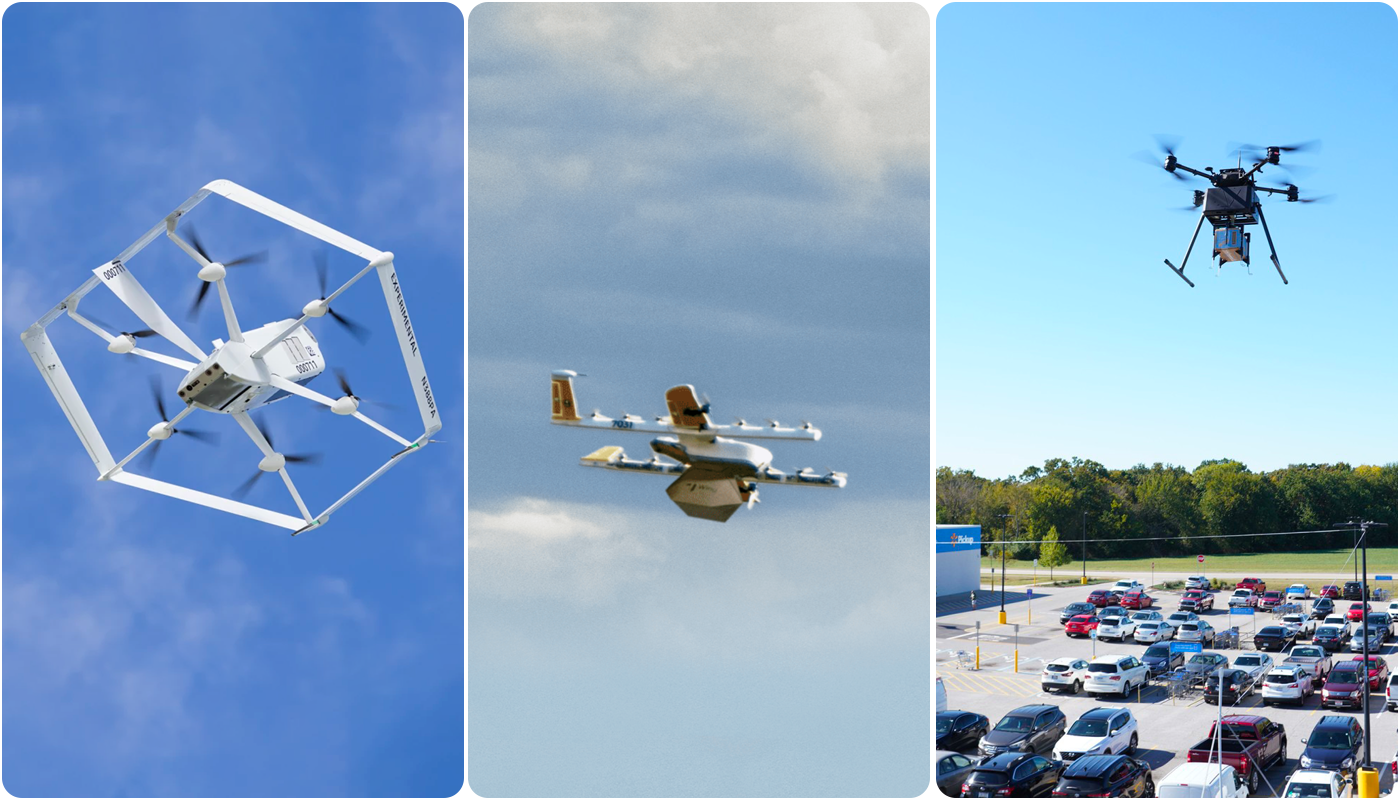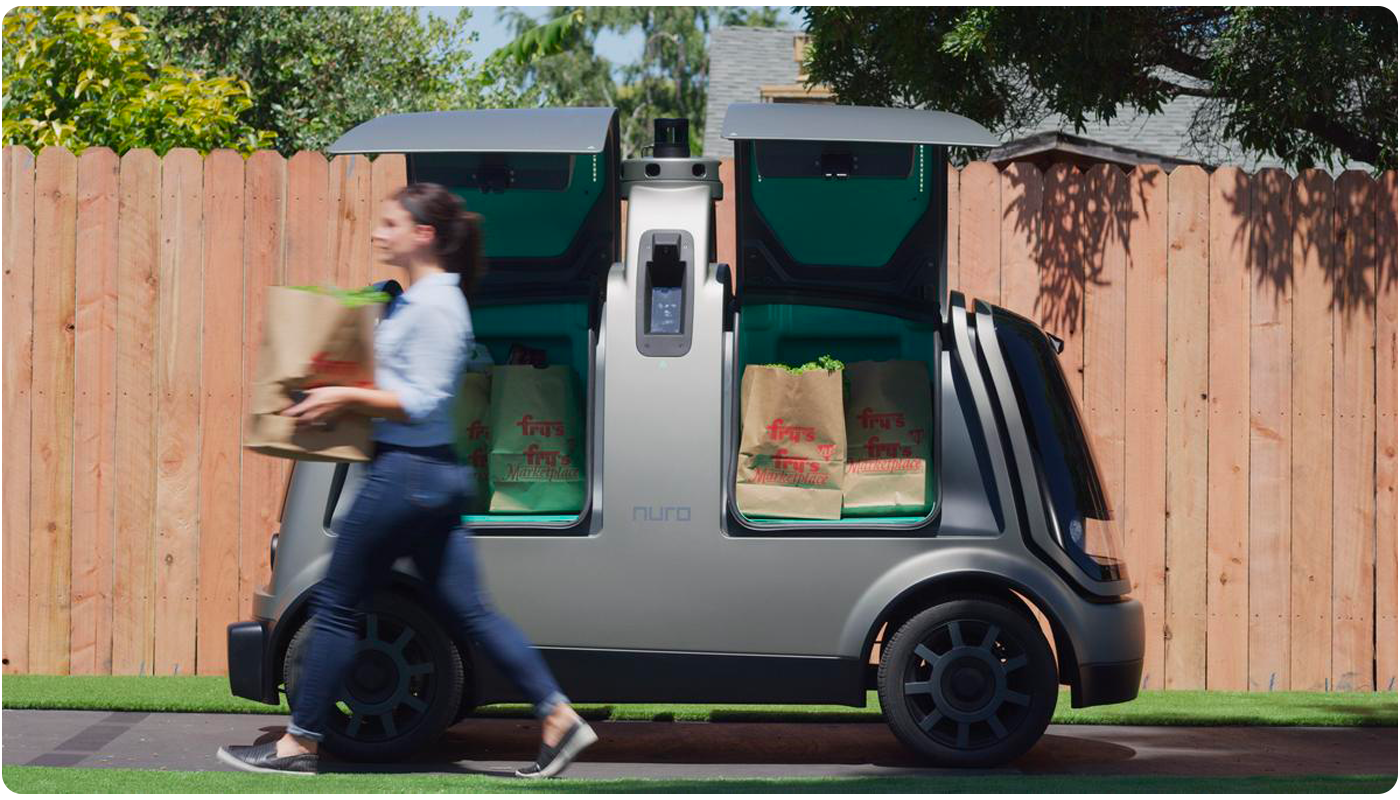Autonomous Delivery & Site Selection
Once A Drone Is Able To Bring Your Latest Online Purchase, Will Placement Matter?
By Caldwell Smith
Published Aug 5, 2022

By Caldwell Smith
Published Aug 5, 2022

If there is one constant that comes with technology, it's that things will change. Commercial real estate is entering a phase of rapid change, thanks in part to a global pandemic but also because of new technology becoming available. Large tech companies like Amazon, Google, and Walmart are already investing heavily in new technologies that will directly impact commercial real estate.
Delivery by drone isn't a new concept. A recent survey of commercial real estate professionals found drones to be among the industry's most impactful technologies. While drones offer several advantages to commercial real estate, delivery may be one of the most significant changes to site selection strategies.
Traditional delivery has struggled with the final step in the delivery process for a while. The last mile, the term used to describe this stage of the process, is complex, time-consuming, and very expensive for the distributor. Big tech companies are trying to flip the process on its head by introducing drones as the last mile delivery option. Delivery was already a priority, but the pandemic increased demand for autonomous delivery.
Amazon's Prime Air, Google's Wing, and Walmart (partnered with DroneUp) are all looking to deliver packages by flying them to you. The goal is simple: To deliver the recent online purchase to customers via drone. After a purchase is made, the package is loaded onto the drone. The drone takes off and flies to the delivery destination. Once the drone arrives, it either lowers or lands to drop the package off before returning to the warehouse to repeat the process.

Fry's recently partnered with Nuro to deliver groceries to customers by land-based self driving robots. These robots would be loaded with whatever groceries you purchase and head for your delivery destination. Once the robot arrives, you can unlock it and grab your fresh groceries. They concluded their study with “phenomenal” results.

Delivery by air has several advantages. There isn't traffic at the flight level these drones would be operating at (aside from the occasional drone user like me), and no one can deny the cool factor of having their newest toy delivered by a drone. But that's where the distinct advantages end. Flight time is a real issue that prohibits delivery outside a certain distance depending on the weight of a package and the power required for the drone to fly. Weather conditions could also make drone flight impossible, and the FAA has a long list of requirements to fly at all for business, let alone with cargo (although progress is being made on this front). There's also the issue of trust. According to recent studies, people don't trust having a drone deliver their package.
Does all that mean delivery by land the best option? We have an excellent infrastructure of roads, sidewalks, and pathways that a robot on wheels could navigate. The problem here is the traffic that already exists on these roads. Whether on a street or the sidewalk, there will most likely be others trying to navigate around these drones. Living in Phoenix when Waymo began testing their self-driving cars, I can say that not everyone gives them the right of way. You can also find a plethora of videos showing people tackling the small robots delivering food on ASU's campus. It's easy to see that there is still a lot of progress needed when it comes to these self-driving robots.
Either method has its problems, and thankfully people much smarter than me are hard at work trying to solve these challenges.
There's still time between now and your latest purchase rolling up to your front door. When that time comes, will site selection no longer matter? I can't tell the future, but the more I think about it, the more I believe site selection will matter more.
Drones and robots alike will only have a certain distance they can travel, so placing a store in the middle of your customers will be crucial, like it is today. Yes, stores may convert in some degree to become more like a warehouse. Grocery and department stores are adapting to cater more to drive up customers. Eventually, they will adapt to autonomous delivery once the technology will match the demand. Still, because of high last mile costs, stores will need to place themselves strategically. Those who choose to deliver packages to their customers with robots will still want access to major roads in order to serve as large an area as possible. Those who choose to use drones will need to be as close as possible and outside major airports' flight paths.
Whatever comes, we'll be here to provide the best possible data for you to make the best site selection decisions you can! •
Last Modified Aug 5, 2022